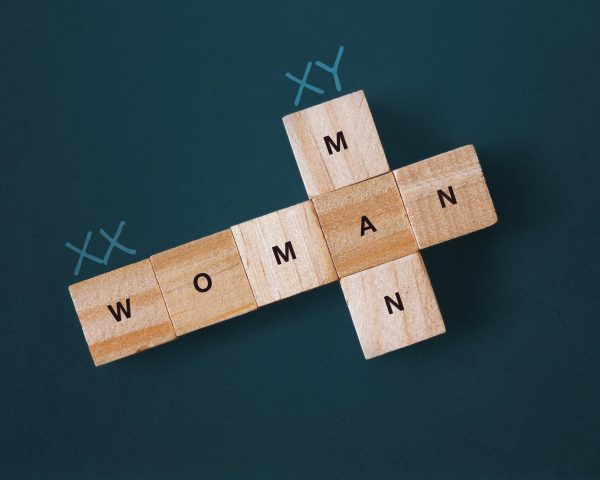The Feminist Movement – A Fight for Liberation
A brief explanation of what Feminists are fighting for
(Scholastic Critical Essay Award Winner)
Due to the recent uptick in mainstream feminism, or “liberal” feminism, one of the most common misconceptions about the Feminist Movement is that the end goal is equality between the sexes, when in reality the final goal is liberation of women and misogyny-affected individuals from the system that oppressed these individuals: the patriarchy. In order to understand the difference between these two objectives, it is crucial to understand how harmful liberal feminism is towards women, and why it is different from other types of feminism.
Over the past twenty years or so, liberal feminism has been gaining more and more traction because its utter simplicity easily appeals to men in numbers more than ever before, but the issues that this type of feminism centers on does more harm than good. This type of feminism completely lacks intersectionality, it glorifies sex work and paints it as empowerment, it focuses on the individual women’s success rather than women as a whole, and it does not aim to dismantle to the oppressive system in place.
Intersectionality is key in making the Feminist Movement effective. Intersectionality takes into account the differences in experiences between white women and women of color. Because the latter faces racism in addition to misogyny, this leads the two groups to have different perspectives, shaped by experience, on the same topic. Often with liberal feminism, you encounter white women leading discussions in which when talking about women’s issues they continuously group white women with women of color which fails to take into account the complexities and differences between white women and women of color. To defend themselves when being called out for lack of intersectionality they default to “girl supporting girls” and exploit that concept.
Another major problem with this type of feminism is its views on sex work. The past twenty years have had more and more people preach that sex work is empowerment for women, this makes it appeal to young and impressionable girls at higher rates and leads them to fall into the trap of sex work and/or hyper-sexualization. In reality, sex work–specifically prostitution– is incomparable to other forms of labor as it is quite literally using somebody’s body for personal pleasure. Additionally, to say that women who work in prostitution or as other forms of sex work are all being empowered is unreservedly tone-deaf. The majority of prostitutes are victims of sex-trafficking, have either suffered childhood trauma (usually sexual abuse), or come from impoverished backgrounds.
Sex work is not an industry where most women willingly want to go into, it is one where they are forced into as victims, and painting it as anything else invalidates the cruelness of the industry. Linked to this issue, this message that liberal feminism sends out to young girls leads to hyper-sexualization and increased pressures on young girls to act more mature than they are from a very young age which is potentially dangerous for a variety of reasons. The sex work aspect alone explains why this form of feminism has gotten the most male following than any prior forms of feminism: in the end it still benefits men while harming women.
Advocates for liberal feminism are often exclusively dead-set on goals like having an equal number of male CEOs and women CEOs. The issue with this, though, is that having an equal ratio of male to female CEOs will not, in any capacity, resolve the social issues that come along with the patriarchy. It will not tarnish the belief that women are inferior to men. It will not get rid of the gender roles that confine women to the home. It will not get rid of the inherent male privilege in our society.. These are ideals that have been ingrained into our society for thousands upon thousands of years and will not go away once everything looks like it is equal. Liberal feminism may result in an increased amount of equal opportunity but it will also produce sneakier and more under-the-table catastrophic forms of misogyny.
Feminism, as with other social movements, should be about liberation from the system of oppression. It should represent the voices of women of different races, sexualities, ages, and backgrounds and acknowledge that they all have different experiences. Feminism must be united and inclusive of all women. It should not remain western-focused and ignore countries in Asia and Africa. It should not be watered down completely and twisted in ways that become counter-productive. This is where intersectional feminism is introduced. This feminism has sub-categories, but they are all fighting for one common thing: liberation by dismantling the Patriarchy. True equality will naturally come from the deconstruction of such oppressive systems in place.
In order for this to be achieved, Feminists and Feminist allies must become increasingly united and assertive. Feminism can no longer be simplified in order to be more palatable and impose less of a threat to men because, in the end, that is counter-productive. When explaining Feminism, it is important to remember that Feminism does not exist for men and therefore they should not be centered in conversations that don’t involve them, and neither should Feminists feel the need to water down ideas and such to appeal to them. Feminists and Feminist allies must also explore the difference in experiences that women face, and understand the roots of misogyny and elements within the patriarchy. We do not want to be equal under the patriarchy, we want to be equal in the absence of the patriarchy.
Zeyna is a sophomore at BASIS Independent Brooklyn. She enjoys baking, having fun with friends, and running in her free time. She also has been dancing...











